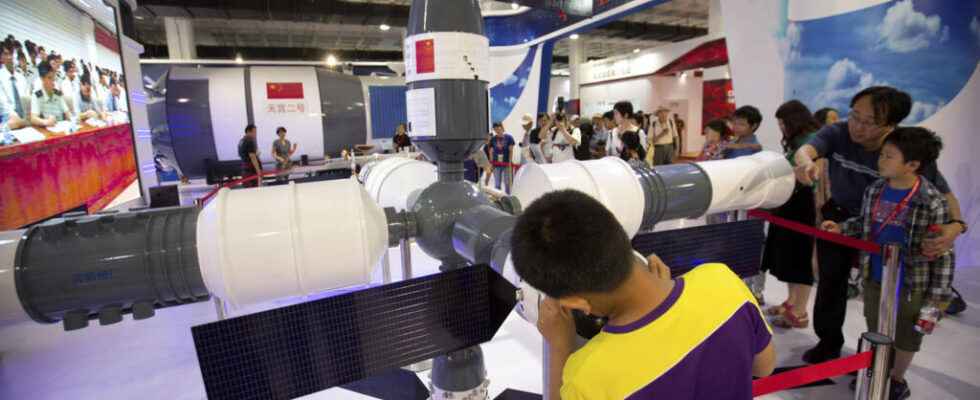The configuration of the Chinese space station is complete. After the mooring on Monday of its third part, consisting of a laboratory module, the “Heavenly Palace” (“Tiangong” in Mandarin) took its “T” shape on Thursday and is now functional.
With our correspondent in Beijing, Stephane Lagarde
It is a strange dance in space, slow and articulated, which the taikonauts witnessed behind their porthole this Thursday morning. At 9:32 a.m., the “Mengtian” laboratory completed its transposition into orbit. It first detached, then re-docked to the center cabin to take on this T-shape.
The Chinese International Space Station is thus composed of three modules: Tianhe, literally “heavenly harmony”the base camp launched in April 2021; Wentian, “celestial explorer”, which completed its transposition in September and which serves both as sleeping and dining area, but also as a research room with its large fridge cabinets. And then, Mengtian, “dream of heaven” in Mandarin, which is probably the most down-to-earth place, since it is in this second part of the laboratory that research will be carried out ranging from the physics of fluids to the science of materials.
Trio of clocks
Entering the new and final module this afternoon, the taikonauts of the Shenzhou 14 mission also recovered advanced scientific equipment, such as these three atomic clocks designed to keep time with unprecedented precision. On the other hand, the Xuntian optical telescope, which was to be mounted inside the module, will finally be placed in the same orbit a few hundred kilometers from the station in 2024, in order to better observe black holes and other exoplanets.
This Chinese modular space station, which will require a total of 11 missions (this is the ninth) for its complete assembly, should accommodate more than 1,000 scientific experiments during its ten-year lifespan, according to the magazine. Natureincluding the study of microgravity on living tissue.
